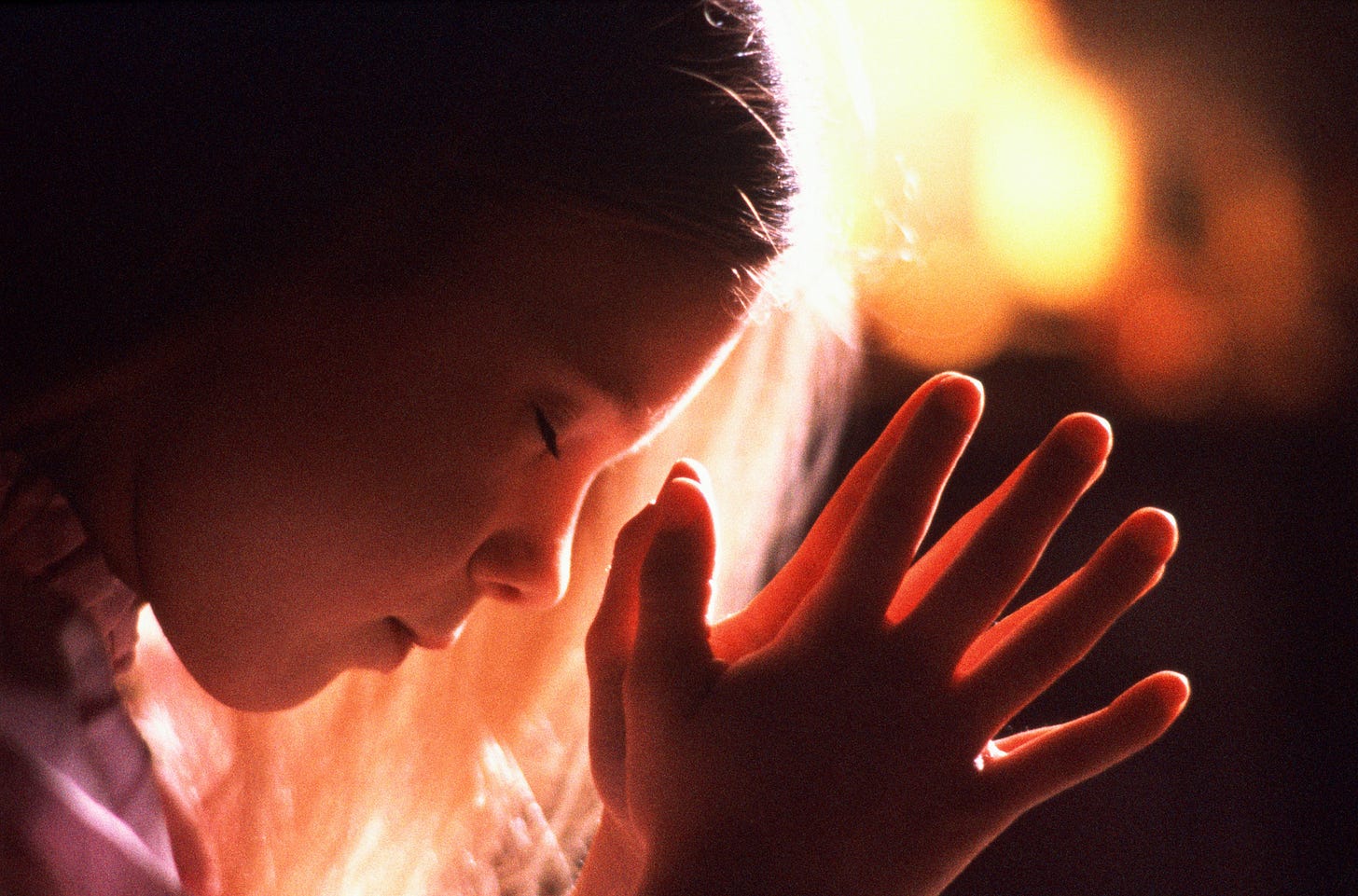"Thoughts and Prayers" is Now Evidence-Based
Meet the Institute of Noetic Sciences (IONS)
Every time there’s a school shooting or some deadly natural disaster, many people’s reflexive response is to send “thoughts and prayers” to the families of the victims. There is always also a reflexive counter-response that views “thinking and praying” as an absurd and silly cop-out. While it’s understandable that those who prefer what they view as real-world action see prayer and thoughts as ineffectual piffle, science disagrees. Groundbreaking research by the Institute of Noetic Sciences (IONS) suggests that intention-focused practices, like thoughts and prayers, may actually have measurable effects.
History of IONS
Astronaut Edgar Mitchell was the 6th man to stand on the Moon. Transfixed by the growing blue Earth on his way home, he had an epiphany about the ultimate oneness of reality.
I realized that the story of ourselves as told by science—our cosmology, our religion—was incomplete and likely flawed. I recognized that the Newtonian idea of separate, independent, discrete things in the universe wasn’t a fully accurate description. What was needed was a new story of who we are and what we are capable of becoming.
And so, in 1973, he founded IONS to “use the power of science to explore inner space.” In essence, they are exploring the intersection of consciousness, science, and spirituality with a particular focus on consciousness, interconnectedness, and the power of intention—the arenas under which thought, prayer, blessing, and meditation fall.
The Science Behind Thoughts and Prayers
Due to the so-called “Hard Problem of Consciousness,” the issue of having no idea how a material thing could be self-aware, more and more philosophers and scientists have gravitated to the idea that consciousness is a fundamental field. It’s not that physical things like the brain give rise to consciousness, but rather that the brain (and all matter) is derived from consciousness itself. Some look to principles of Quantum physics such as Quantum Entanglement, the fact that particles that have interacted affect each other instantaneously, even over vast distances, as evidence of the consciousness field.
IONS has performed numerous controlled experiments that measure the effects of intention on physical systems and outcomes, such as random number generators, plants, and healing studies (thoughts and prayers). You can see descriptions of their gold-standard, peer-reviewed experiments here.
One example tested the ability of skilled meditators to infuse positive intentionality (prayer) into chocolate. As outlined in Dr. Dean Radin’s book Real Magic:
We conducted a double-blind experiment to see if beneficial intentions—a blessing—directed toward chocolate would elevate the mood of people who ate it, more than the exact same chocolate that wasn’t blessed.
He explains the methodology over several pages and concludes that “the average mood measure had improved more in the group eating the blessed chocolate than in the control group, with odds of chance of 24 to 1.” They then analyzed a subset of the group who are not chocoholics who “showed a much stronger improvement in mood, with odds of a chance of 10,000 to 1.”
Practical Applications and Implications
All of this has practical implications. We are told, “It’s the thought that counts,” but it may be so much more significant than we imagined. We could all be sabotaging ourselves and others with the intentions that we hold. Conversely, if we were able to learn to harness the power of thought, perhaps we could bring about a surprising amount of goodness and success that we had assumed was beyond our control.
It’s already been scientifically evidenced that a spiritual approach to life is healthier than the alternative (see the work of David DeSteno and Lisa Miller, for instance), but who knows how much evidence-based prayer and meditation could complement traditional medicine if it were to become more widely accepted. Are we inadvertently curtailing the healing process by assuming that it’s a strictly physical endeavor?
In a broader sense, these discoveries also have potential societal benefits, from reducing stress and enhancing community cohesion to fostering greater compassion and understanding between families, the workplace, and nations. Whether these findings can penetrate the public consciousness and gain widespread acceptance to maximize their potential remains to be seen. Perhaps the power of thoughts and prayers has been within us all along, waiting to be recognized by science. Still, it is now clear that the convergence of ancient wisdom and modern science is giving "thoughts and prayers" a new, evidence-based foundation.




